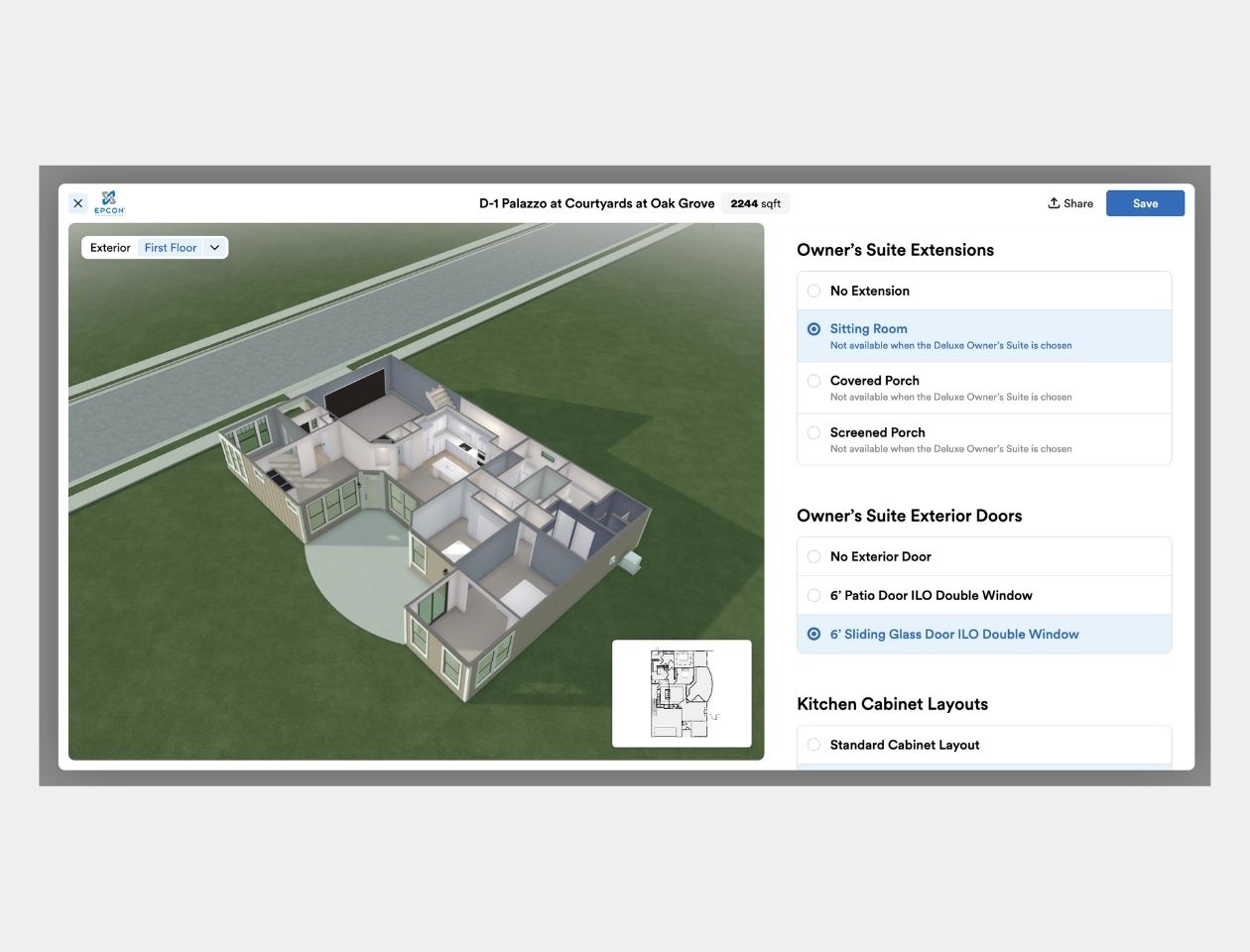Although life has mostly returned to normal in the wake of the pandemic, as history tells us, diseases and pandemics permanently alter the way we live, often in the form of our communities and architecture. A few years back, prior to joining the team at Higharc, I attended a seminar at the International Builder Show where a physician presented for an hour on home design and its impact on home health. The faces of just about everyone in that room turned white as she shifted from how well-designed homes can enhance our lifestyles to how design and construction methods ultimately affect the lives of those living within those homes. Homes are not just built to look great and stand the test of time, but also determine the health and well-being of the owners.
For several years, we all become a prisoner in our own homes for the first time and will forever think about how to best prepare should it happen again. Living in close quarters with family members certainly tested our patience in work and school as families struggled to find a quiet space to take a call or lead their kids’ lessons. Dedicated office spaces/classrooms support home-based working & learning. In addition, having a home gym, workshop or studio might have become more of a necessity than a desire.
The home features you care about are changing
In the kitchen, the need for storage of more than 1 week of food is driving pantry size, increasing closets and even enlarging or adding refrigerated spaces. Home interaction with the outdoors has become top of mind as home design evolves. After being trapped inside a box for a period of time, particularly in temperate weather climates, fresh air became a necessity to help relax and recharge. Additionally, natural lighting and adequate home ventilation became science-backed requirements for some buyers. The strategy of reducing the quantity and size of windows to save cost may be reversed as we look to enhance the amount of vitamin D that helps kill germs in our homes.
We expect our homes to be safe and healthy
Mechanical home ventilation requirements, through the use of an ERV or HRV, have been shown to improve indoor air quality. Could it be that increased air tightness of new homes as a result of the energy crisis of the 1970s is directly related to the increased number of people that have allergies and asthma today? An article I read years back suggests it is. Homes aren’t built to breath as they were years ago. The increase of manufactured building products producing off-gassing glues and formaldehyde along with pollen, pet dander and dust can often create a toxic environment in which to live. Current building codes are based on ASHRAE 62.2 and require builders to test homes to determine the number number of air changes per hour (ACH), primarily to meet air leakage requirements as it pertains to home energy and moisture control. Indoor air quality standards such as the EPA’s Indoor airPlus program will likely be under the microscope soon. Mechanical ventilation requirements that increase the number of ACH in a more controlled manner not only removes stale/toxic air, it also can use cutting-edge technology like UV rays to filter the air before replacing it with fresh outside air to both condition and balance the air we breathe.
Hands-free kitchen faucets help prevent germ spread
Touch-less technology has inspired building products in our homes and is an important factor in reducing germ spread. Automated home lighting via motion sensors have been common in luxury homes for years. Plumbing fixture manufacturers have introduced affordable motion sensing faucets to increase cleanliness in Kitchens. Nearly every home today has a voice automated assistant like the Google “Home” or Amazon “Echo”. Until COVID-19, we’ve thought of touchless technology as a convenience. Today, we think about everything we touch (i.e. door knobs, light switches, and toilet seats, just to name a few). We constantly wash and sanitize our hands. Our brains have trained us to see germs everywhere in the world around us. Look for touch-less technology in both new and existing homes to gain market share in the near future.
As history has proven, times of uncertainty and despair like wars, natural disasters and disease tend to lead to change that impacts our world for the better. Home design and home health trends have undergone a major shift, with COVID-19 being the spark that lit an unforeseen fire for change.
See higharc in action
Discover how Higharc can empower your team to conquer change, modernize your buyer experience, and decrease cycle times.
Book a demo



.png)




.png)



.jpg)








%20(1260%20x%20960%20px).jpg)
%20(1260%20x%20960%20px).jpg)

.jpg)

.jpg)


















